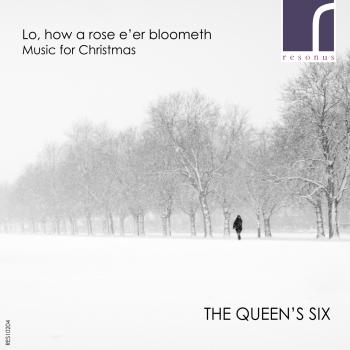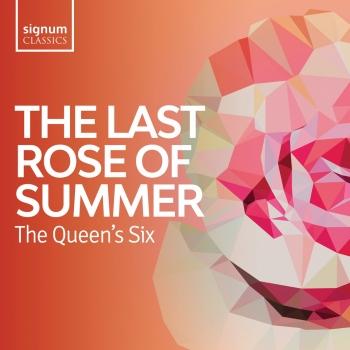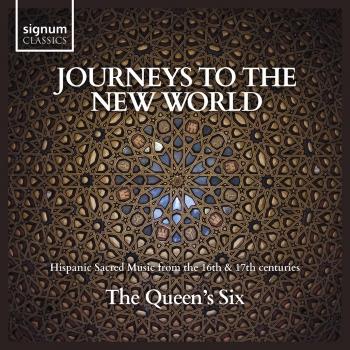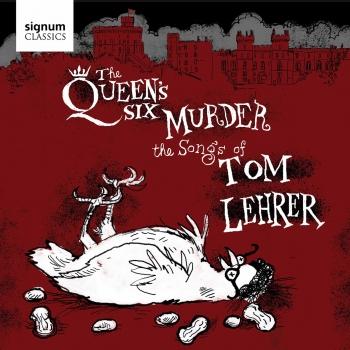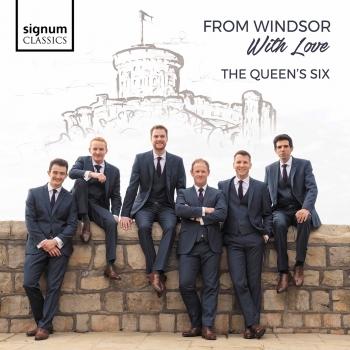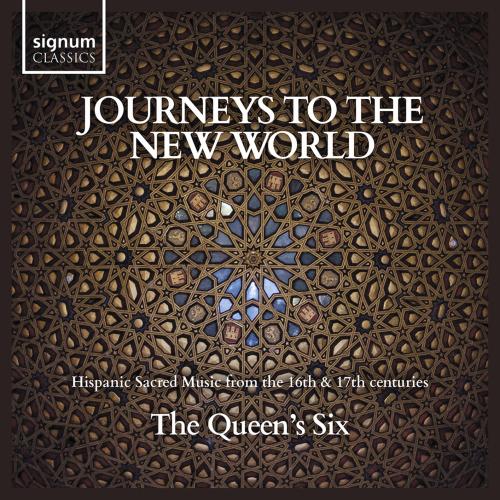
Journeys to the New World: Hispanic Sacred Music from the 16th & 17th Centuries The Queen's Six
Album info
Album-Release:
2020
HRA-Release:
21.08.2020
Album including Album cover Booklet (PDF)
- Cristóbal de Morales (1500 - 1553):
- 1 Regina caeli laetare à 6 04:30
- Hernando Franco (1532 - 1585):
- 2 Salve regina à 5 09:36
- Tomás Luis de Victoria (1548 - 1611):
- 3 Vidi speciosam 05:58
- Francisco Guerrero (1528 - 1599):
- 4 Trahe me post te 04:50
- Alonso Lobo (1555 - 1617):
- 5 Versa est in luctum 04:47
- Juan Gutierrez de Padilla (1590 - 1664):
- 6 Circumdederunt me 04:16
- Francisco López Capillas (1615 - 1673):
- 7 In horrore visionis 04:27
- Juan Gutierrez de Padilla:
- 8 Versa est in luctum 03:02
- Francisco López Capillas:
- 9 Tantum ergo 01:40
- Alonso Lobo:
- 10 O quam suavis est 04:32
- attrib. Hernando Franco:
- 11 Christus factus est 02:00
- Cristóbal de Morales:
- 12 O sacrum convivium 04:48
- Tomás Luis de Victoria:
- 13 O quam gloriosum 02:20
- Francisco Guerrero:
- 14 Beatus Achacius 07:31
- Miguel Mateo de Dallo y Lana (1650 - 1705):
- 15 Laudate Dominum 02:06
Info for Journeys to the New World: Hispanic Sacred Music from the 16th & 17th Centuries
This is a musical trip from the mid-sixteenth century to around 1700, involving music in Late Renaissance style, carrying Spanish Catholicism across the Atlantic to supplant an indigenous culture. Once the invasion had taken root with the conquest of Tenochtitlán and its transformation to Mexico City, the country became the target of fervent friars and preachers. Franciscans were first in 1523, then Dominicans, all fired with Christian zeal to convert the native population. From the outset they used music to great effect. The accounts that survive show how successful they were in teaching singing and playing, training choirs to perform liturgical music. By the mid-century it was claimed that standards had reached that of Charles V’s chapel. Churches and cathedrals were established throughout the rapidly expanding New Spain. Conquest and Christianity imposed an almost exact replica of Old Spain. Liturgical books, prints of plainchant and polyphony were shipped in throughout the century.
In this recording the singers present music by eight composers. Four of them never went to the New World; their music did. Three of them were born in Spain and were trained in music there; they held appointments in Spain and later emigrated to the new colonial cities. One more became the first composer-choirmaster to be born there of Spanish parents, thus criollo.
The Queen’s Six:
Daniel Brittain, countertenor
Tim Carleston, countertenor
Nicholas Madden, tenor
Dominic Bland, tenor
Andrew Thompson, baritone
Simon Whiteley, bass
The Queen's Six
were established in 2008, the 450th anniversary of the accession of Queen Elizabeth I, from whom they take their name.
Based at Windsor Castle, all the members of The Queen's Six are also Lay Clerks of St George's Chapel, whose homes lie within the Castle walls. The Chapel Choir, which consists of boy trebles and twelve professional adult male singers, performs some eight services a week, as well as at private and state occasions, often before the Royal Family.
Now Dan, Tim, Nick, Dom, Andrew and Simon have come together to bring their unique style of entertainment to a much wider audience. Their repertoire extends far beyond the reach of the choir stalls: from austere early chant, florid Renaissance polyphony, lewd madrigals and haunting folk songs, to upbeat Jazz and Pop arrangements.
Booklet for Journeys to the New World: Hispanic Sacred Music from the 16th & 17th Centuries







